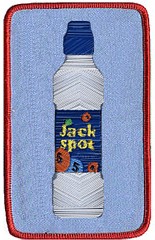This is part of a regular series of articles exploring some of the terms used in e-learning (view other articles in the series). We’ll do our best to break down the jargon and explain what things are from a basic perspective.
Open Badges are a visual way to recognise and display learning, personal development and experience. The concept combines the idea of skill and activity badges from the Scouts with the achievement badges from computer games and online services/mobile apps, such as FourSquare. As with these previous uses, each badge has clearly defined criteria to be met before the badge can be received. Previous uses of badges have tended to limit the display of badges to one particular ‘ecosystem’, so badges earned on FourSquare can only be seen on FourSquare and it isn’t possible to mix-and-match badges from playing Xbox games with ones for playing Playstation games. Open Badges are different because they provide a way to gather together badges from multiple sources and present collections to different audiences, so friends could see games-related badges through Facebook whereas employers would see badges relevant to specific posts. The credibility of each badge comes from the criteria needed to earn it combined with the underlying credibility of the issuer – so a badge from ‘Sheffield Hallam University’ has the institution’s credibility behind it, whereas one from ‘CheapOnlineDegrees.com’ would have no credibility.
One of the motivations for the development of Open Badges was the view that large amounts of learning and development takes place outside of formal education but it is difficult to present this to interested parties, such as employers and educational institutions, because the evidence is scattered across multiple websites and paper documents. Open Badges provide a way to gather all of this evidence into a single place and manage how it is presented to others. However, there are also uses for these badges within formal education.
Use in Higher Education
Transcripts, grades and certificates are the standard ways to show learning and development in Higher Education but these can obscure other important learning, such as skill development and competency. With student and graduate employability high on the agenda for universities, Open Badges can provide a way for students to provide evidence of this learning to prospective employers. Some UK universities are taking part in the Higher Education Achievement Report (HEAR) project, which allows graduates to give additional information about their learning to employers. This video gives an explanation of the HEAR:
The main difference between Open Badges and the HEAR is that the latter is a formal, university-controlled document which is ‘frozen’ upon graduation, whereas Open Badges can present a more flexible, student-controlled record which can continue to be developed after graduation.
Beyond providing a record of achievement, some uses for Open Badges in HE include:
- recognising exceptional work;
- pushing students to go a little further, such as a badge that encourages reading around a topic;
- providing clear targets for students to aim at, e.g. bronze, silver and gold levels;
- presenting a visual profile of the skills a student should have at each stage of their degree;
- recognising staff involvement in CPD activities.
Further Information
The following are links to some additional resources about Open Badges:
- Open Badges website
- Innovating Pedagogy 2013 report
- Badge the UK project – aims to increase employer awareness and recognition of badges
- Briefing report on the technology and possible implications for Sheffield Hallam [SHU staff only]
- Presentation and paper on staff and student perceptions of Open Badges
Any SHU members who are interested in discussing Open Badges further and investigating how they could be used can get in touch with Ian at i.glover@shu.ac.uk.




